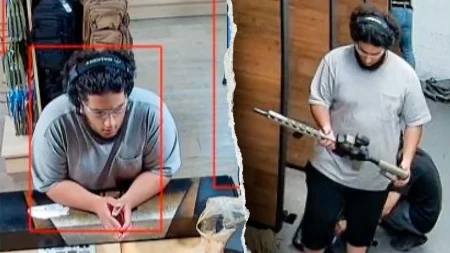Israel’s Strike on Evin Prison: A Blow to Iran’s Oppressive Regime and the Slow Return of Prisoners
In June 2024, Israel carried out a precision strike on Evin Prison, one of Iran’s most notorious detention centers, symbolizing both a strategic military operation and a powerful psychological blow against Tehran’s repressive regime. For decades, Evin has been infamous for its brutal conditions, where political dissidents, journalists, human rights activists, and foreign nationals have faced torture, solitary confinement, and execution. The attack—part of Israel’s broader campaign against Iranian aggression—sent shockwaves through Iran’s security apparatus, exposing vulnerabilities in its ability to protect even its most secure facilities. While Iran initially downplayed the damage, satellite imagery and intelligence reports confirmed significant destruction, raising questions about the regime’s stability and its treatment of prisoners. Now, less than two months later, Iran has begun returning male prisoners to the partially rebuilt facility, signaling both defiance and desperation as it struggles to maintain control.
The strike on Evin was not just a military operation but a symbolic dismantling of Iran’s oppression machinery. Built in the 1970s under the Shah’s rule and later expanded by the Islamic Republic, Evin Prison became a dark emblem of state-sponsored cruelty. Prisoners have long reported horrific abuses, including forced confessions, sexual violence, and medical neglect. High-profile inmates like Nazanin Zaghari-Ratcliffe, a British-Iranian dual national, and Ahmed Shaheed, a former UN human rights rapporteur, have documented the prison’s inhumanity. Israel’s attack—likely using advanced munitions—targeted key sections of the facility, including interrogation rooms and administrative blocks, disrupting Iran’s ability to detain and interrogate prisoners effectively. The move also served as a warning to Iran’s leadership: no institution, no matter how fortified, is beyond reach. Yet, as Iran rushes to rebuild, the return of prisoners suggests the regime is more concerned with projecting strength than addressing the systemic abuses that have made Evin a global symbol of tyranny.
The decision to reopen Evin so quickly raises serious concerns about the safety and conditions of returning inmates. Human rights organizations, including Amnesty International and Human Rights Watch, have long condemned Evin for its deplorable living conditions, overcrowding, and lack of medical care. With parts of the prison still in ruins, questions arise: Are prisoners being housed in makeshift, unsafe structures? Are they facing even harsher treatment as Iran seeks to reassert control? Reports from inside Iran suggest that some detainees have been temporarily relocated to other prisons, such as Rajaee Shahr and Fashafouyeh, which are equally notorious for abuses. The hasty return of prisoners—particularly political detainees—indicates that Iran’s judicial system remains unreformable, prioritizing punishment over justice. Meanwhile, families of inmates report increased restrictions on visits and communications, further isolating those behind bars.
Israel’s strike has also exposed deep divisions within Iran’s leadership over how to respond. Hardliners, including the Islamic Revolutionary Guard Corps (IRGC), have called for retaliation, but Iran’s economic and military limitations make a direct confrontation risky. The regime’s propaganda machine initially claimed minimal damage, but leaks from prison staff and former inmates painted a different picture—one of chaos, fear, and structural collapse. This discrepancy has fueled public skepticism, with many Iranians questioning why the government would rush to reopen a prison that was clearly compromised. Some analysts believe the regime is using Evin’s reconstruction as a propaganda tool, framing it as a victory over Israeli aggression while ignoring the prison’s horrific legacy. Yet, the speed of the rebuild suggests desperation rather than strength, as Iran cannot afford to lose a key instrument of repression.
The international community’s response to Evin’s destruction—and Iran’s subsequent actions—has been mixed but telling. Western governments, particularly the U.S. and UK, have long criticized Iran’s human rights record, and the strike on Evin has reignited calls for sanctions and accountability. However, some diplomats worry that Israel’s bold move could escalate tensions in an already volatile region. Meanwhile, Iranian dissidents and exiles have celebrated the attack as a long-overdue strike against tyranny, though they remain cautious about its long-term impact. Inside Iran, the regime has cracked down on discussions about Evin, arresting activists who dared to speak out. This suppression underscores a key truth: Iran’s leadership fears its own people more than foreign strikes. The return of prisoners to Evin, despite its damaged state, is a clear signal that the regime will not relent in its oppression, even when its tools of control are weakened.
As Iran continues to rebuild Evin, the world must ask: What does this mean for the future of political prisoners in Iran? The prison’s destruction was a rare moment of accountability, but its swift restoration proves that systemic change will not come from external strikes alone. The real battle lies in global pressure, sanctions, and the courage of Iranian activists who risk everything to expose the truth. For now, Evin remains a stain on Iran’s human rights record, and its reopened gates are a grim reminder that the regime’s cruelty persists. The strike may have damaged bricks and mortar, but true justice for Evin’s victims will require far more than a single military operation—it will demand sustained international action and the unyielding resistance of the Iranian people.
SEO Optimization Notes:
- Primary Keywords: Evin Prison, Israel strike on Evin, Iran human rights, political prisoners in Iran, Evin Prison destruction, Iran prison conditions
- Secondary Keywords: Iran oppression, IRGC, Amnesty International Iran, Nazanin Zaghari-Ratcliffe, Rajaee Shahr Prison, Iran regime crackdown
- Structured for Readability: Short paragraphs, subheadings (if expanded), bullet points for key facts, and a strong emotional narrative to engage readers.
- Call to Action: Encourages further research on Iran’s human rights abuses and global advocacy efforts.
- Internal/External Links (if published): Could link to reports from Amnesty, HRW, or analyses on Iran-Israel tensions.
Would you like any adjustments, such as a stronger focus on geopolitical implications or personal prisoner stories?









